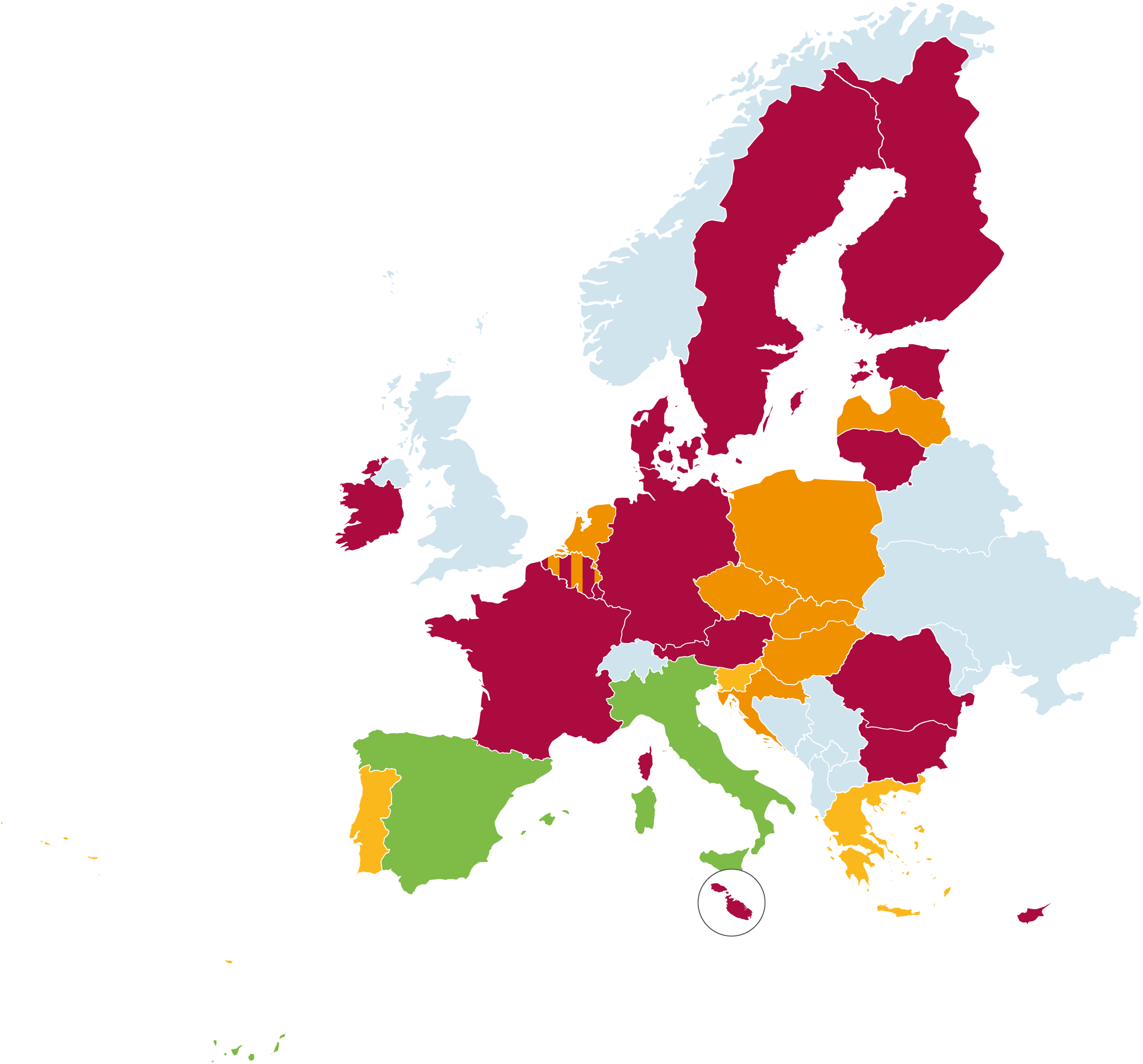Cohesion & Regional Development funds
Cohesion & Regional Development Funds
The Cohesion Fund provides support to Member States with a gross national income (GNI) per capita below 90% EU-27 average to strengthen the economic, social and territorial cohesion of the EU. 37% of the overall financial allocation of the Cohesion Fund are expected to contribute to climate objectives. The European Regional Development Fund (part of Cohesion policy) is to contribute to reducing disparities between the levels of development of the various regions. The Regulation on the Regional Development and Cohesion Funds explicitly recognises Renewable Energy Communities as an output indicator under Policy Priority Objective 2 (RCO97). DG REGIO has repeatedly emphasized that Policy Priority Objective 5 (Europe closer to citizens) is also a clear baseline for justification, relating to support for energy communities.
It should be noted that there is great variance in the support provided to energy communities amongst national and regional programmes. Our overall assessment, for each individual country, is based on the average overview of all the Cohesion & Regional Development programmes.

Here is an explanation of the logic behind the colours:
How to understand and use this tracker
The map has been colour coded based on four tiers:
- First, a number of member states simply ignored energy communities. There were no mentions of energy communities or related concepts in the targeted operational programs. We marked those countries in red.
- Second, some member states mentioned energy communities in their programs but in a very limited capacity. Either energy communities were only included as a target amongst many others, or the scope of actors and activities was limited. We marked those countries in orange.
- Third, member states added energy communities to their programs. Energy communities were specifically targeted which allows us to hope for specific programs to be built tailored to their needs. However, energy communities where often then limited to a specific type of actor or a specific activity (e.g., energy communities consisting only of Municipalities, or businesses). This is not in line with the European definitions CEC and REC, and will thus not produce the expected impact. We marked those countries in yellow.
- Forth, the member states included energy communities in their programs, with specific programs targeting their needs, and with a full scope of activities and actors included. These fulfil the objectives and requirements of EU funding guidelines. We marked those countries in green.
The overall colour given to a certain fund, for a certain country, was tabulated based on 12 sub-criteria touching on various topics such as broader program design, transparency, and alignment with transposition.
Some countries have both national and regional Operational Programs for Cohesion Policy Funds. We assessed them together and assigned an average color grade across the different available programs.
How we assessed each country’s funds implementation
The methodology underpinning the present research consisted of the following four steps:
- Creation of the subset of the 12 sub-criteria, on which the qualitative analytical framework was based.
- In-depth analysis, by national campaigners, of all the publicised materials regarding national public financing plans.
- Interviews and discussions with Managing Authorities and other relevant stakeholders from different Member States to complement the research inputs from Step 2.
- Iterative feedback on the collated material from the involved campaigners, as well as additional stakeholders.
Mentions
This analysis was carried through in collaboration with CEE Bankwatch Network, and Climate Action Network. We would like to express our gratitude to the following national organisations for their invaluable contributions to the research: ènostra, Energie Samen, Bündnis Bürgerenergie, Malta Co-operative Federation, Energie Partagée, Za Zemiata (For the Earth), Estonian Green Movement, Friends of the Earth - CEPA, Centre for Transport and Environment, National Society of Conservationists - Friends of the Earth Hungary, Polish Green Network, Green Liberty, Bankwatch Romania, The Green Tank, FOCUS Association for Sustainable Development, Žiedinė ekonomika, and Eco-Union.
Updates to the tracker
This financing tracker will be frequently updated with new developments in how countries implement EU public funds in their national financing programmes.
In case you have additional information on your countries' EU public funds implementation or you have comments/corrections on the existing information, please contact directly chris.vrettos@rescoop.eu.